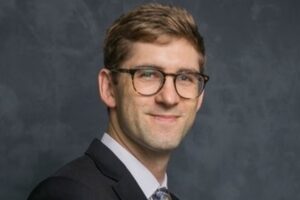Research With Impact
Measuring Unfair Inequality: Reconciling Equality of Opportunity and Freedom from Poverty
The Review of Economic Studies, 89, 6, November 2022
Summary:
Following the seminal 2003 work by Piketty and Saez, the literature has documented a continued increase of income inequality since the beginning of the 1980s in many Western societies, and this evidence has strongly influenced public discourse. However, empirical evidence on distributional preferences shows that people do not judge inequality as problematic per se but that they do take into account the fairness or unfairness of the ou come. In this article, Ravi Kanbur and co-authors propose a new measure of (unfair) inequality based on two widely held normative principles, namely equality of opportunity and freedom from poverty.
Developing a method for decomposing inequality and its trends into an unfair and a fair component, they bring this new measure to the data, and provide important insights about the fairness of inequality, both over time in the US and across countries. Their results document that unfair inequality matches the inequality growth in the US since 1980, a trend driven by decreases in social mobility, i.e., increasing importance of parental education and occupation for the income of their children. Among the 32 countries of their international comparison, the land of opportunity ranks among the most unfair societies in 2010.

Ravi Kanbur, T.H. Lee Professor of World Affairs
Charles H. Dyson School of Applied Economics and Management
Computational sustainability meets materials science
Nature Reviews Materials, 6, August 2021
Winner of the 2021 Fiegenbaum Prize
Summary
Humanity’s consumption of Earth’s resources endangers our planet and the
livelihood of current and future generations. Our Common Future, the 1987
seminal report by the United Nations World Commission on Environment and Development, highlighted the interconnectedness of environmental, economic, and societal issues pertaining to sustainability, and introduced the notion of sustainable development as “development that meets the needs of the present without compromising the ability of future generations to meet their needs.” In 2015, as part of the United Nations 2030 Agenda for Sustainable Development, 193 countries agreed on 17 ambitious goals, referred to as the Sustainable Development Goals.
Materials science is central to many sustainability challenges. Exploiting
synergies between computational sustainability and materials science, Gomes et al. explore computational sustainability’s harnessing of computing and artificial intelligence for human well-being and the protection of our planet, arguing that this discipline advances both fields, furthering the ultimate goal of establishing a sustainable future.

Carla Gomes, Professor
Charles H. Dyson School of Applied Economics and Management

Sachin Gupta, Henrietta Johnson Louis Professor of Management
Samuel Curtis Johnson Graduate School of Management
Managing Members, Donors, and Member-Donors for Effective Non-profit Fundraising
Journal of Marketing, 85, 3, April 2021
Summary
Nonprofit organizations (NPOs) play a central role in many economies in the form of private entities serving a public purpose. Strengthening the fundraising capabilities of NPOs can have a large impact on their survival and effective functioning. NPOs typically elicit financial contributions through multiple forms of giving, such as donation and membership. These options enable individuals to express their altruism by giving in one or multiple forms.
The authors develop a utility-based multiple discrete-continuous model that provides insights into potentially large differences in individuals’ giving behaviors. Through Bayesian Gaussian processes, the model also incorporates changes in givers’ preferences for forms of giving. The authors apply their model to five years of individual giving data, and find that the effects of lifetime, recency, seasonality, and appeals on donation and membership options change nonmonotonically over time and in distinctive ways. The model estimates help predict who will give in more than one form in the future, and they also build appeal targeting strategies. The model also shows that fundraising attempts should emphasize participation rather than amount, and that long-lapsed members are still worth pursuing for renewal, whereas long-lapsed donors are less productive for repeat giving.
Vehicle Maintenance Contracting in Developing Economies: The Role of Social Enterprise
Manufacturing & Service Operations Management, 23, 6, November 2021
Summary
Difficulties in healthcare delivery in developing economies arise from poor road infrastructure of rural communities, where most people live. Motorcycles are an effective means for delivering healthcare products, but governments in developing economies lack expertise in proper maintenance, resulting in frequent vehicle breakdowns. Riders for Health, a nonprofit social enterprise (SE), has developed capabilities to enable enhancements in vehicle maintenance, engaging with governments and providing services through different contracting approaches. However, the effect of this practice on improving vehicle availability—the main social mission of Riders for Health—is not well understood.
This paper presents one of the first rigorous analyses of how SEs achieve their goals through innovations in operations. The authors highlight the relationship between a social mission objective and a service contract choice, contrasting it with the choice by a profit-maximizing organization. They construct and analyze a stylized model combining the elements of reliability theory and contract theory, explicitly accounting for the SE’s social mission in the objective function, and find that the “total solution” approach of providing all aspects of vehicle maintenance, including fleet ownership, is a preferred choice for an SE that prioritizes improving vehicle availability, while an organization focused on profit maximization would find this approach less attractive. The total solution approach also induces the SE to exert more effort on failure prevention and repair lead time reduction inequilibrium. These findings provide theoretical support for Riders for Health’s recent move toward the total solution approach as it expands its service into wider rural areas in many countries. The insights obtained from our analysis offer actionable guidelines to other SEs operating in developing economies.

Li Chen, Associate Professor, Breazzano Family Term Professor
Samuel Curtis Johnson Graduate School of Management
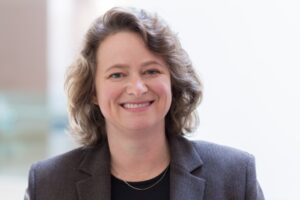
Suzanne B. Shu, John S. Dyson Professor in Marketing, Dean of Faculty and Research
Journal of Marketing, 85, 2, 2021
Summary
Maintaining the natural environment is one of the most pressing issues facing our planet and its inhabitants. In a time when natural resources are dwindling, the active and intentional care of public goods is of utmost concern. Yet the neglect of common resources (as compared with singularly-owned resources) is common, and known in economics as the “tragedy of the commons” (Hardin 1968; Ostrum 1990). The key insight of this theory is that shared ownership leads to a diffusion of responsibility among community members, such that no one individual steps forward to provide stewardship (with either effort or money) for the resource.
How can consumers be encouraged to take better care of public goods? Across four studies, Shu et al. demonstrate that increasing consumers’ individual psychological ownership facilitates stewardship of public goods, because feelings of ownership increase consumers’ perceived responsibility, which then leads to active behavior to care for the good. Evidence including a public lake with kayakers, a state park with skiers, and a public walking path, suggests that increasing psychological ownership enhances both effortful stewardship, such as picking up trash from a lake, and financial stewardship, such as donating money. The effect is reduced when there are cues which diffuse responsibility among many people. This work offers implications for consumers, practitioners, and policy makers with simple interventions that can encourage consumers to be better stewards of public goods.
The effect of leaded gasoline on elderly mortality: Evidence from regulatory exemptions
American Economic Journal: Economic Policy, 13, 3, August 2021
Summary
Lead (Pb) is a toxic heavy metal associated with numerous adverse outcomes ranging from increased aggressive behavior to premature mortality. In response to mounting health concerns, countries around the world began taking action in the 1970s to reduce lead exposure.
However, leaded gasoline is still used globally for aviation and automotive racing. Exploiting regulatory exemptions and a novel quasi-experiment, Rudik and Hollingsworth find that leaded gasoline use in racing increases ambient lead, elevated blood lead rates, and elderly mortality. The mortality estimates indicate that each gram of lead added to gasoline exceeds $1,100 in damages. Ruling out potential confounders, such as correlated pollutants or socioeconomic status, they provide the first causal estimates linking adult mortality to leaded gasoline, highlight the value of banning on-road leaded gasoline, and present policy-relevant cost estimates at the lowest ambient levels to date.
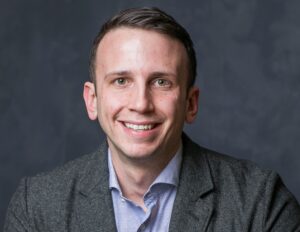
Ivan Rudik, Ruth and William Morgan Assistant Professor in Applied Economics and Management
Charles H. Dyson School of Applied Economics and Management
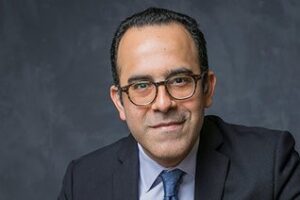
Ariel Ortiz-Bobea
Associate Professor, Charles H. Dyson School of Applied Economics and Management
Anthropogenic Climate Change Has Slowed Global Agricultural Activity Growth
Nature Climate Change, 11, 4, April 2021
Summary Enhancing agricultural productivity is vital to lifting global living standards and advancing sustainable food production in the face of escalating challenges to agriculture and the environment. Agricultural research has fostered productivity growth, but the historical influence of anthropogenic climate change (ACC) on that growth has not been quantified.
In this study, Ortiz-Bobea et al. develop a robust econometric model of weather effects on global agricultural total factor productivity (TFP) and combine this model with counterfactual climate scenarios to evaluate impacts of past climate trends on TFP. Their baseline model indicates that ACC has reduced global agricultural TFP by about 21% since 1961, a slowdown that is equivalent to losing the last 7 years of productivity growth. The effect is substantially more severe (a reduction of ~26–34%) in warmer regions such as Africa and Latin America and the Caribbean. The authors also find that global agriculture has grown more vulnerable to ongoing climate change.
Federal Coal Program Reform, the Clean Power Plan, and the Interaction of Upstream and Downstream Climate Policies, American Economic Journal: Economic Policy 12, 1, February 2020
Summary: Coal mined on federally managed lands accounts for approximately 40% of U.S. coal consumption and 13% of total U.S. energy-related CO2 emissions. The U.S. Department of the Interior is undertaking a programmatic review of federal coal leasing, including the climate effects of burning federal coal. This paper studies the interaction between a specific upstream policy, incorporating a carbon adder into federal coal royalties, and downstream emissions regulation under the Clean Power Plan (CPP). After providing some comparative statistics, the authors present quantitative results from a detailed dynamic model of the power sector, the Integrated Planning Model (IPM). The IPM analysis indicates that, in the absence of the CPP, a royalty adder equal to the social cost of carbon could reduce emissions by roughly 3/4 of the emissions reduction that the CPP is projected to achieve. If instead the CPP is binding, the royalty adder would: reduce the price of tradeable emissions allowances, produce some additional emissions reductions by reducing leakage, and reduce wholesale power prices under a massbased CPP, but increase them under a rate-based CPP. A federal royalty adder increases mining of non-federal coal, but this substitution is limited by a shift to electricity generation by gas and renewables. These findings highlight the importance of information spillovers on individual performance in knowledge-based industries.
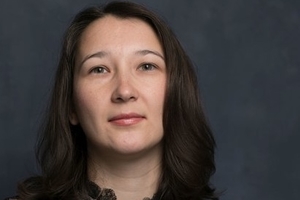
Elena Belavina
Associate Professor, Cornell Nolan School of Hotel Administration

Karan Girotra
Charles H. Dyson Family Professor of Management, SC Johnson Graduate School of Management
Bike-share systems: Accessibility and Availability, Management Science 66, September 2020
Summary: The cities of Paris, London, Chicago, and New York (among many others) have set up bike-share systems to facilitate the use of bicycles for urban commuting. This paper estimates the impact of two facets of system performance on bike-share ridership: accessibility (how far the user must walk to reach stations) and bike availability (the likelihood of finding a bicycle). The authors obtain these estimates from a structural demand model for ridership estimated using data from the Vélib’ system in Paris, and they find that every additional meter of walking to a station decreases a user’s likelihood of using a bike from that station by 0.194% (±0.0693%), and an even more significant reduction at higher distances
(>300 m). These estimates imply that almost 80% of bike-share usage comes from areas within 300 meters of stations, highlighting the need for dense station networks. The authors find that a 10% increase in bike availability would increase ridership by 12.211% (±1.097%), three-fourths of which come from fewer abandonments and the rest of which comes
from increased user interest. They illustrate the use of their estimates in comparing the effect of adding stations or increasing bike-availabilities in different parts of the city, at different times, and in evaluating other proposed improvements.
Reducing greenhouse gas emissions of Amazon hydropower with strategic dam planning, Nature Communications, 10, 1, September 2019
Summary: Hundreds of dams have been proposed throughout the Amazon basin, one of the world’s largest untapped hydropower frontiers. While hydropower is a potentially clean source of renewable energy, some projects produce high greenhouse gas (GHG) emissions per unit electricity generated (carbon intensity). Here the authors show how carbon intensities of proposed Amazon upland dams are often comparable with solar and wind energy, whereas some lowland dams may exceed carbon intensities of fossil-fuel power plants. Based on 158 existing and 351 proposed dams, they present a multi-objective optimization framework showing that low-carbon expansion of Amazon hydropower relies on strategic planning, which is generally linked to placing dams in higher elevations and smaller streams. Ultimately, basin-scale dam planning that considers GHG emissions along with social and ecological externalities will be decisive for sustainable energy development where new hydropower is contemplated.
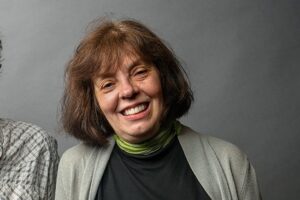
Carla Gomes
Professor of Computer Science, Charles H. Dyson School of Applied Economics and Management
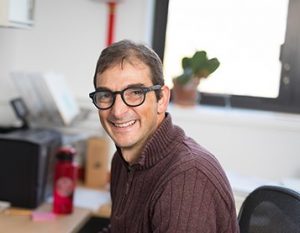
Miguel I. Gómez
Associate professor, Charles H. Dyson School of Applied Economics and Management
The economics and ecology of shade-grown coffee: a model to incentivize shade and bird conservation, Ecological Economics, 159, May 2019
Summary: The cultivation of shade-grown coffee is a production system widely regarded as environmentally sustainable and useful for biodiversity conservation. In this method, the crop is grown under a forest-like canopy of trees, enhancing pest control from birds; however, the process produces lower coffee yields. Gómez et al study this tradeoff here, along with the economic incentives required for smallholders (people managing agricultural holdings smaller than farms) to adopt shade practices rather than conventional systems, in which coffee is grown in sunnier settings. Formulating a dynamic optimization problem, the authors show that smallholders have incentives to allocate more land to shade-grown coffee under the appropriate market conditions.
Wind Turbine Shutdowns and Upgrades in Denmark: Timing Decision and the Impact of Government Policy
Summary For policymakers, an important long-run question related to the development of renewable industries is how government policies affect decisions regarding the scrapping or upgrading of existing assets. This paper develops a dynamic structural econometric model of wind turbine owners’ decisions about whether and when to add new turbines to a pre-existing stock, scrap an existing turbine, or replace old turbines with newer versions (i.e., upgrade). Lawell et al apply their model to owner-level panel data for Denmark between 1980-2011 to estimate the underlying profit structure for small wind producers (the vast majority of turbine owners in the Danish wind industry during this time period), and evaluate the impact of technology and government policy on wind industry development. Explicitly taking into account the dynamics and interdependence of shutdown and upgrade decisions, and generating parameter estimates with direct economic interpretations, results from the model indicate that the growth and development of the Danish wind industry were driven primarily by government policies as opposed to technological improvements.
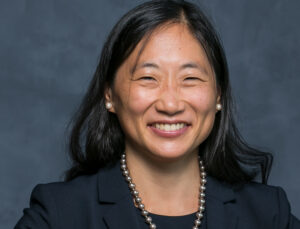
C.-Y. Cynthia Lin Lawell, Associate Professor, Robert Dyson Sesquicentennial Chair in Environmental, Energy, and Resource Economics, Charles H. Dyson School of Applied Economics and Management
Better Business: How the B Corp Movement Is Remaking Capitalism, Yale University Press, 2020 (Order Here)
Summary: Informed by Chris Marquis’ decade-plus of research on B Corps and animated by interviews with the movement’s founders and leading figures, Better Business tells the story of the rise of the B Corporation, a new corporate structure whose companies commit to putting social benefits and environmental stewardship on equal footing with financial shareholders. Marquis not only explores the rapid growth of global companies choosing to certify as B Corps, but also how B Lab’s systems and processes create more resilient and sustainable stakeholder-focused economic systems.
“Better Business is the book to read if you want to put values and purpose at the center of your company. It’s an inspiring book with great insights to share.”
– Jerry Greenfield, co-founder, Ben & Jerry’s
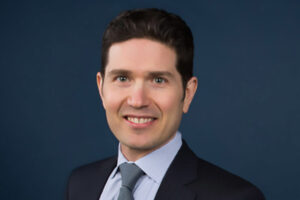
Christopher Marquis
Samuel SC Johnson Professor in Sustainable Global Enterprise, Professor of Management and Organizations, Samuel Curtis Johnson Graduate School of Management
Emerging human infectious diseases and the links to global food production, Nature Sustainability 2, June 2019
Summary: As global food demand rises sharply, infectious diseases emerge at unprecedented rates. Feeding 11 billion people will require increases in crop and animal production, agricultural use of antibiotics, water, pesticides and fertilizer, and contact between humans and wild and domestic animals. Evidence suggests that this activity contributes to the emergence and spread of infection. Barrett et al synthesize literature indicating that, since 1940, agricultural drivers were associated with significant proportions of all disease –and nearly half of all zoonotic infections– emerging in humans, and that these numbers are likely to grow. The authors identify agricultural, disease management, and policy actions, along with additional research, to address this public health challenge.
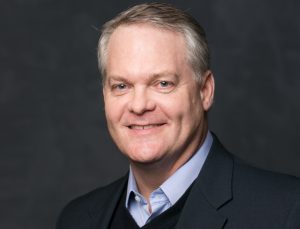
Christopher B. Barrett
Stephen B. and Janice G. Ashley Professor, Charles H. Dyson School of Applied Economics and Management

